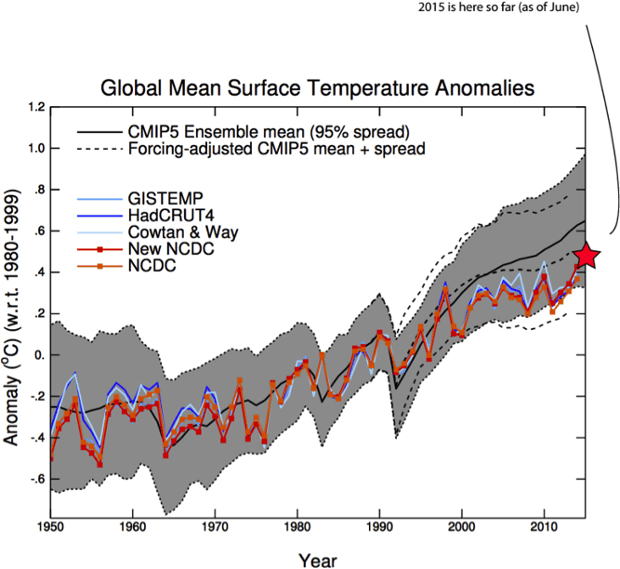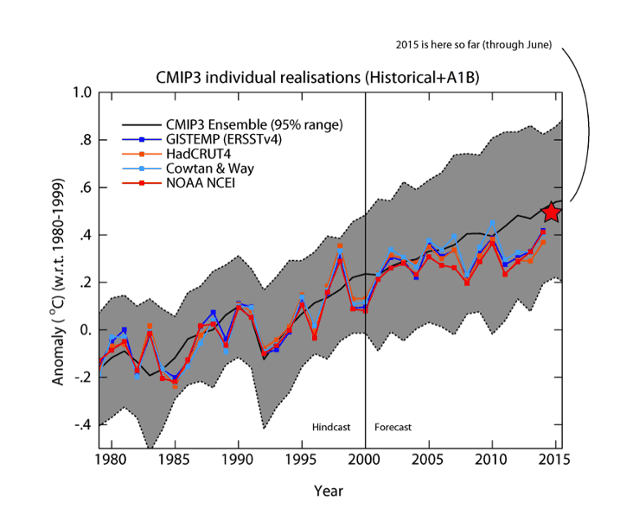
In an earlier post, I wrote about some research that compared ocean temperature measurements to climate model predictions. It turns out, the models have done a great job estimating the increase in ocean heat although they have slightly under-predicted the change.
What about other components of the Earth’s climate? For instance, how have the models done at predicting the changes in air temperatures? With recent data now available, we can make an assessment. I communicated with NASA GISS director Dr. Gavin Schmidt, who provided the following data.
The graph shows the latest computer model simulations (from the CMIP project), which were used as input to the IPCC, along with five different temperature datasets. The comparison to be made is of the heavy dashed line (annotated in the graph just below the solid black line) and the colored lines. The heavy dashed line is the average predicted temperature including updated influences from a decrease in solar energy, human emitted heat-reflecting particles, and volcanic effects.
The dashed line is slightly above the colored markers in recent years, but the results are quite close. Furthermore, this year’s temperature to date is running hotter than 2014. To date, 2015 is almost exactly at the predicted mean value from the models. Importantly, the measured temperatures are well within the spread of the model predictions.

Comparison of the most recent climate model simulations with actual global surface temperature measurements. Created by Gavin Schmidt.
If we next consider earlier predictions using the prior generation of climate models, we see results below. Again, we see that in recent years, temperatures are slightly below the average of the models, but well within the uncertainty range. Furthermore, if we were to add the current 2015 temperatures, it would be very nearly at the model mean.

Comparison of CMIP3 climate model simulations with actual global surface temperature measurements. Created by Gavin Schmidt.
So we see the models are doing a pretty good job. Certainly, they are good enough for us to project out into the future. I think of models as a crystal ball. We use them to see the future, albeit as a cloudy picture. While we cannot expect models to be perfect, they are good enough to help inform our decisions today.
Posted by John Abraham on Wednesday, 12 August, 2015
 |
The Skeptical Science website by Skeptical Science is licensed under a Creative Commons Attribution 3.0 Unported License. |